WAR GRAVE
LESLIE RICHARD EVANS (grave 20)
PILOT OFFICER
83 SQUADRON
ABOUT MY LIFE
Born: 20th March 1913
Died: 4th April 1941
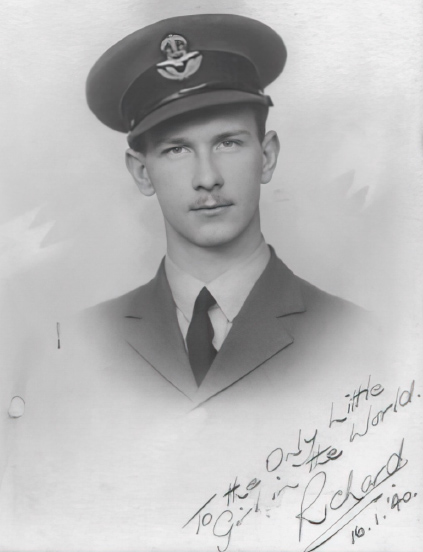
I was born in Portsmouth on the 20th March 1913 and was married to Phyllis May Evans. My only son, Richard, was born the day after I died. I had been keen to join the RAF as a pilot and to improve my chances I obtained my Private Pilot’s Licence on 26th August 1939. I subsequently joined the RAF on 7th September 1939 in the rank of Acting Pilot Officer. A year later, I was made a substantive Pilot Officer and joined 83 Squadron at Scampton to commence flying duties in March 1941, just a few weeks before the crash that was to claim my life.
Before the war, I trained as an engineer at His Majesty’s Dockyard Colleges at Portsmouth and Bermuda. I then went to work for the Burmah Oil Company until war broke out. I married Phyllis in February 1940.
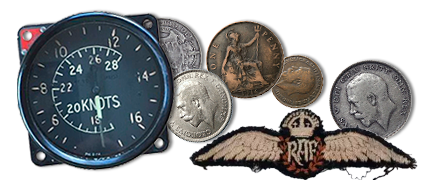
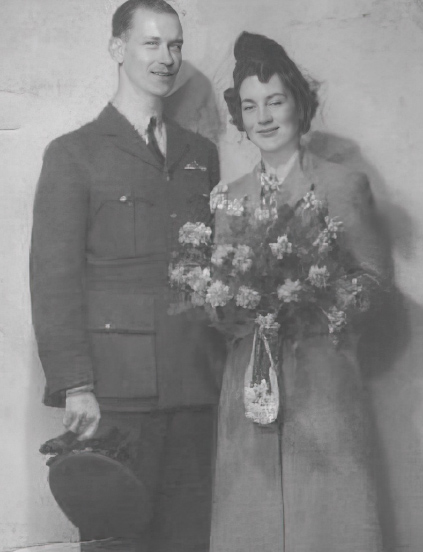
Leslie and Phyllis on their wedding day.
MY AIRCRAFT
On this flight, we were flying an 83 Squadron Hampden with the serial number AD748. The aircraft carried the squadron code OL – M.
The Hampden was a medium bomber with a crew of 4. Pilot, Navigator, Wireless Operator/gunner and a further gunner. Although it was a vast improvement on the biplanes 49 Squadron had been flying just before the war opened, in reality it was already obsolete. Early daylight raids had been a disaster, the bomber was too slow to evade German fighters and its guns were no match for the Germans either. The distinctive fuselage, designed to give the aircraft a sleek, aerodynamic profile, led to the Hampden earning its nickname of “The Flying suitcase”.
Crew: 4
Span: 21.09 m
Length: 16.32 m
Height: 4.37 m
Wing area: 63.90 m²
Empty weight: 5,344 kg
Loaded weight: 8,508 kg
Engine: 2 x Bristol Pegasus XVIII 9-cylinder radial engines
Engine power: 980hp each
Maximum speed: 410 km/h
Rate of climb: 5.00 m/s
Range normal: 1,095 km
4 or 6 x 7.7mm Vickers K machine guns (1 flexible, 1 nose, 1 or 2 dorsal, 1 or 2 ventral)
1,814kg of bombs/mines or 1 x 18in torpedo
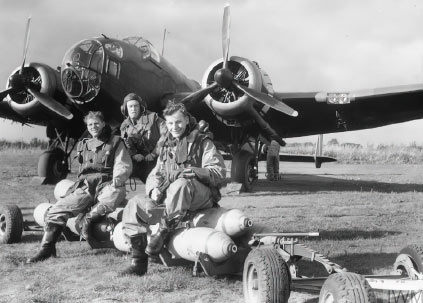
An 83 Squadron crew in front of their Hampden.
MY ROLE
On this mission, I was a pilot acting in the capacity of navigator.
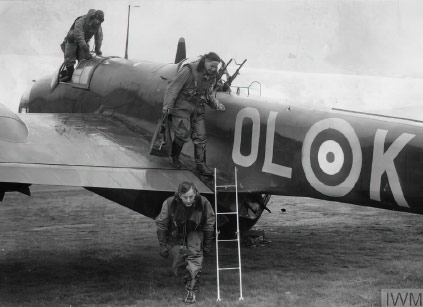

MY SQUADRON
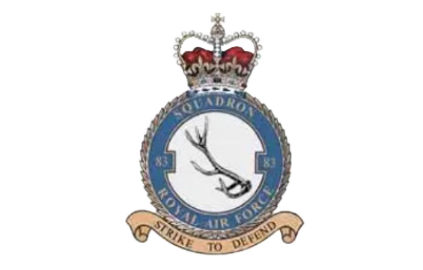
Motto: Strike to Defend
83 Squadron was formed at Montrose on 7th January 1917 as a night bomber squadron. Moving to France in March 1918, the squadron saw action on the western Front and took part in operations to counter the German’s Spring Offensive. Following the end of the war, the Squadron was disbanded on 31 December 1919.
With the threat of war once again looming over Europe, 83 squadron was reformed at RAF Turnhouse on 4th August 1936, flying the Hawker Hind biplane. In March 1938, the squadron re-equipped with Handley Page Hampdens at RAF Scampton.
In the summer of 1940, the Squadron received one of Scampton’s three Victoria Crosses due to the heroic actions of Flight Sergeant John Hannah in putting out the fire on a battle damaged Hampden.
In December 1941, the squadron re-equipped with the infamous Avro Manchester, but the poor reliability of this aircraft led to them quickly being re-equipped with the legendary Avro Lancaster, with which the squadron fought the rest of the war. In August 1942, the squadron became a pathfinder unit, leading large bomber formations to their targets and laying target indicator flares so they could be more accurately hit.
After the war, they flew Avro Lincolns and Avro Vulcans, before being disbanded in 1969.
THE ACCIDENT
Gardening was the RAF’s codename for mission to drop anti-ship mines in German shipping lanes, often just outside their harbours. Each of these areas were given codenames in the form of vegetables, flowers, herbs and spices. The mission we were given was Gardening for Cinnamon. To us this meant we were to lay an anti-ship mine just outside the German held port of La Rochelle in France.
The mine had to be laid in exactly the right place from just the right height. The first thing we had to do was find a predetermined landmark on the enemy coast, we would then slow to under 200mph and fly a timed leg on a precise course. We successfully dropped our mine, but since we had departed Scampton at 6:45pm, a thick fog had descended over most of the country.
We decided to divert to RAF St Eval in Cornwall where the weather was better. At 2:10am, a local farmer heard a loud explosion, which he assumed was thunder, sadly this was our aircraft crashing into Hangingstone Hill on Dartmoor, there were no survivors.
One explanation for the crash was that aeronautical maps of the time used imperial measurements and all heights were represented in feet. Inexplicably, the sole exception seemed to be Hangingstone Hill, which had its height shown in metres. The map showed a figure of around 600, which the crew could reasonably taken to be 600ft. Hangingstone Hill is in fact 1948ft above sea level.

A Naval CPO attached to Scampton sets a mine prior to loading it to the aircraft.
Before I left on this mission, I promised my heavily pregnant wife that whatever happened, I would be back in time for the birth. Before any news reached home about my death, Phyllis went into labour. She always maintained that whilst giving birth to Richard, she had a very clear vision of me in the delivery room. I was determined to keep my promise.
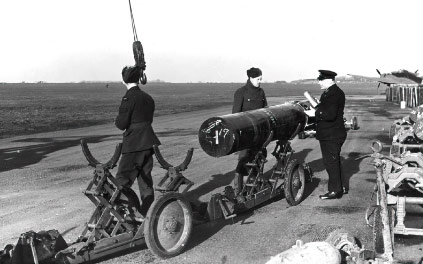
The mine being handed over to the armourers.
CASUALTIES – 4TH APRIL 1941
Flight Lieutenant Reginald Thompson (pilot) (Buried St Leonards, Sunningwell)
Pilot Officer Leslie Evans (Navigator) (Buried Scampton)
Sergeant Leslie Eden (Air Gunner) (Buried Camberwell New Cemetery)
Sergeant Alan Murray (Air Gunner) (Buried Exeter Higher Cemetery)
ON THIS DAY IN WORLD WAR TWO – 4TH APRIL 1941
In Iraq allied forces bomb Bagdhad.
In Libya, Rommel’s attack on Tobruk stalls and a siege begins.
